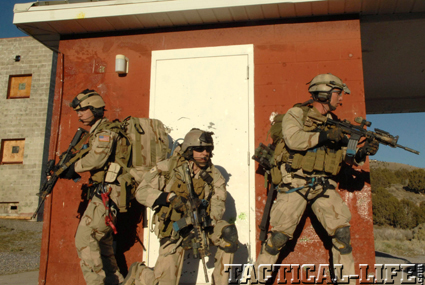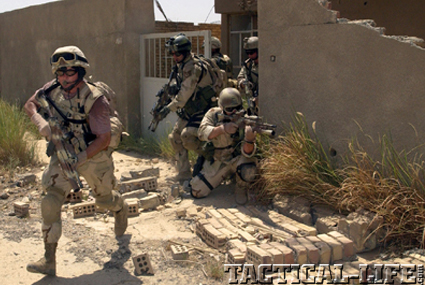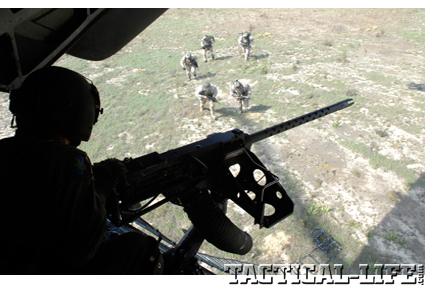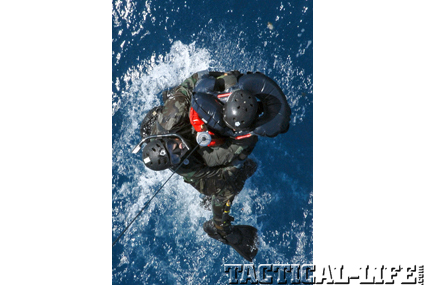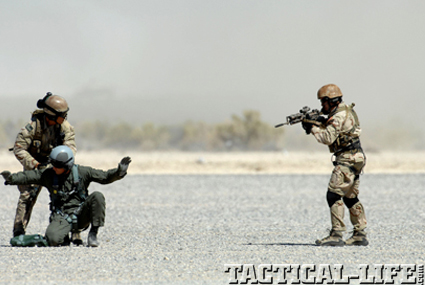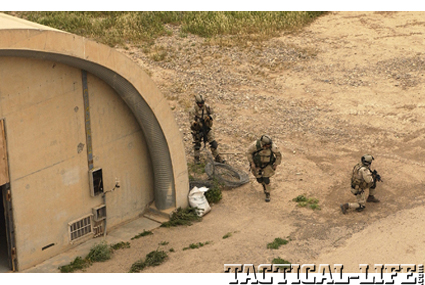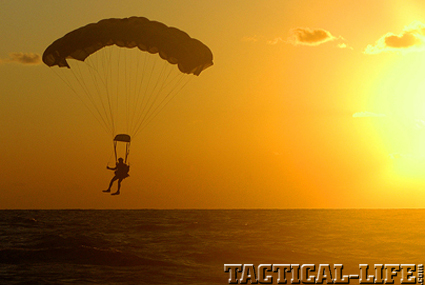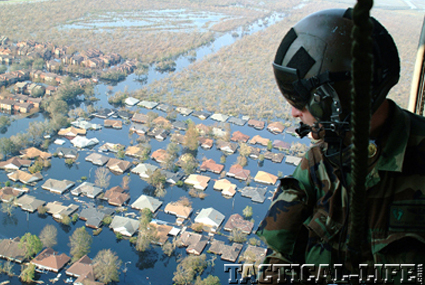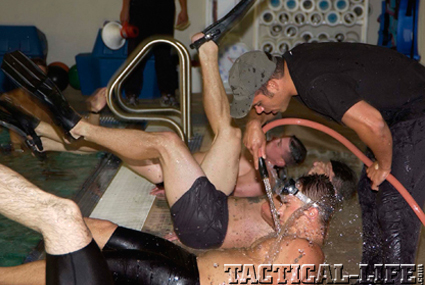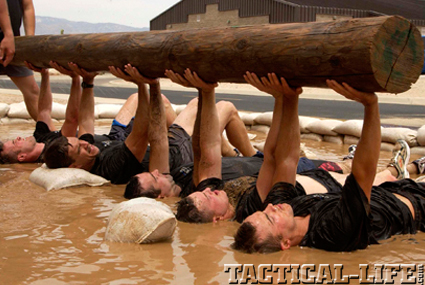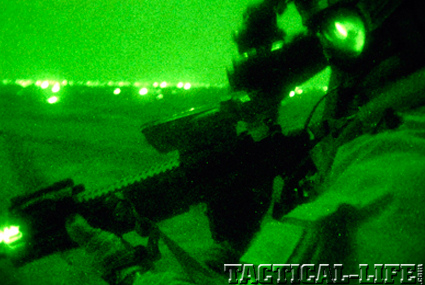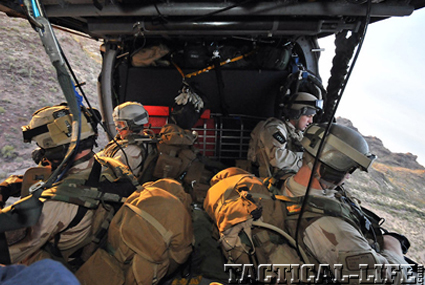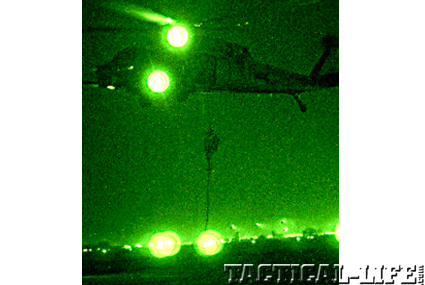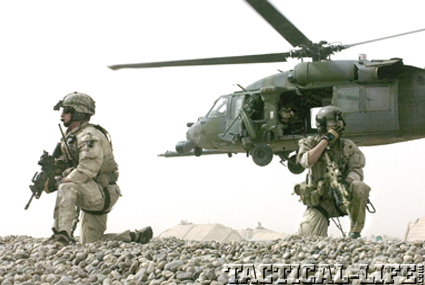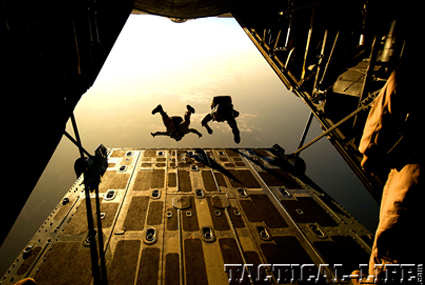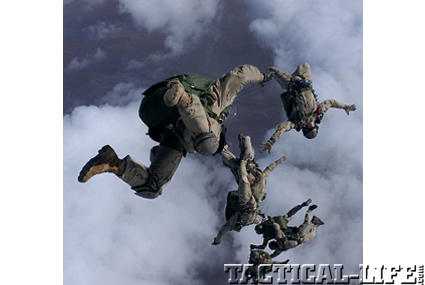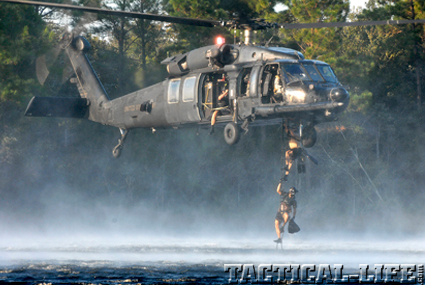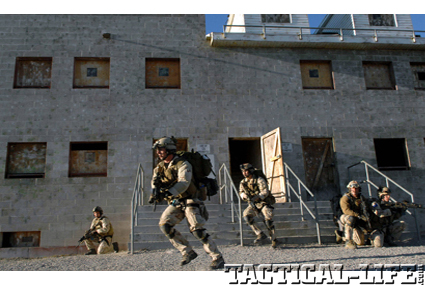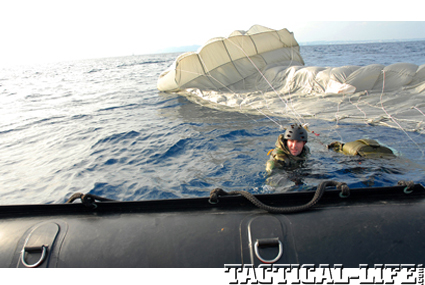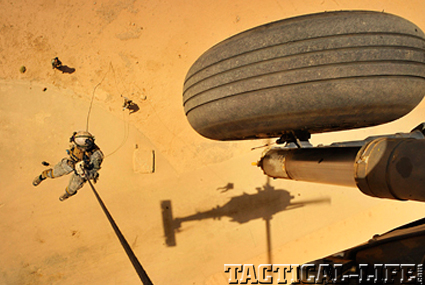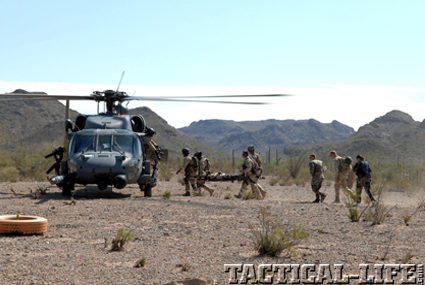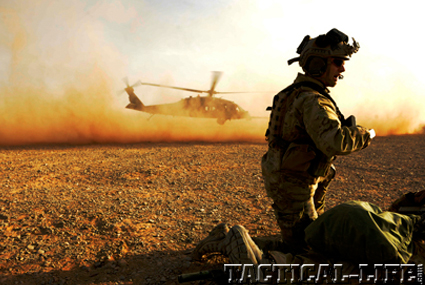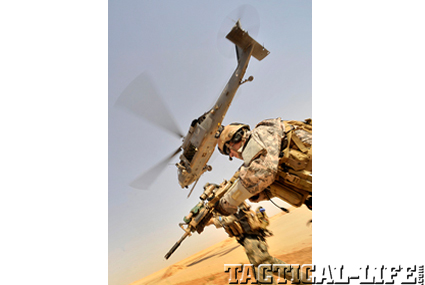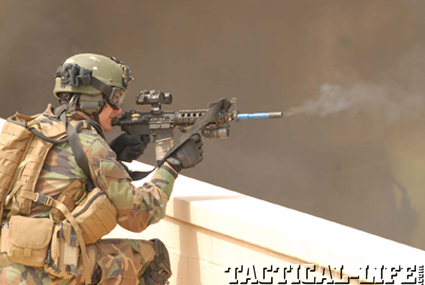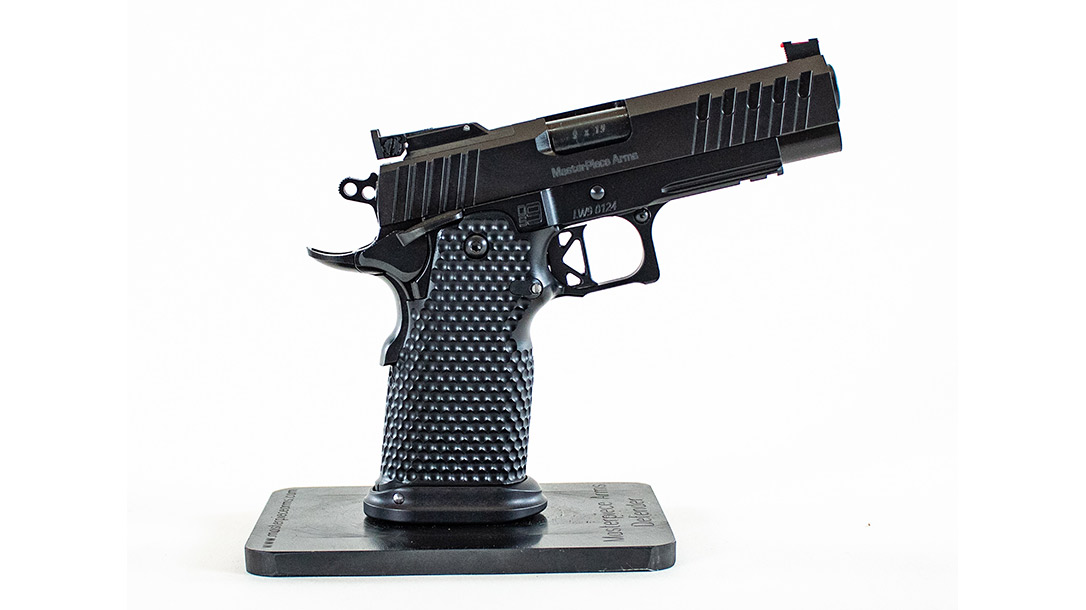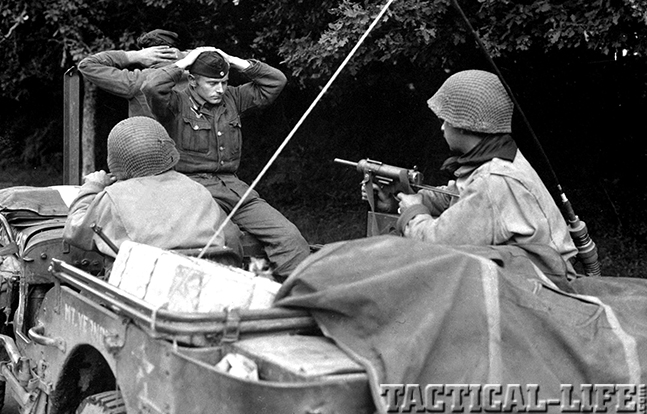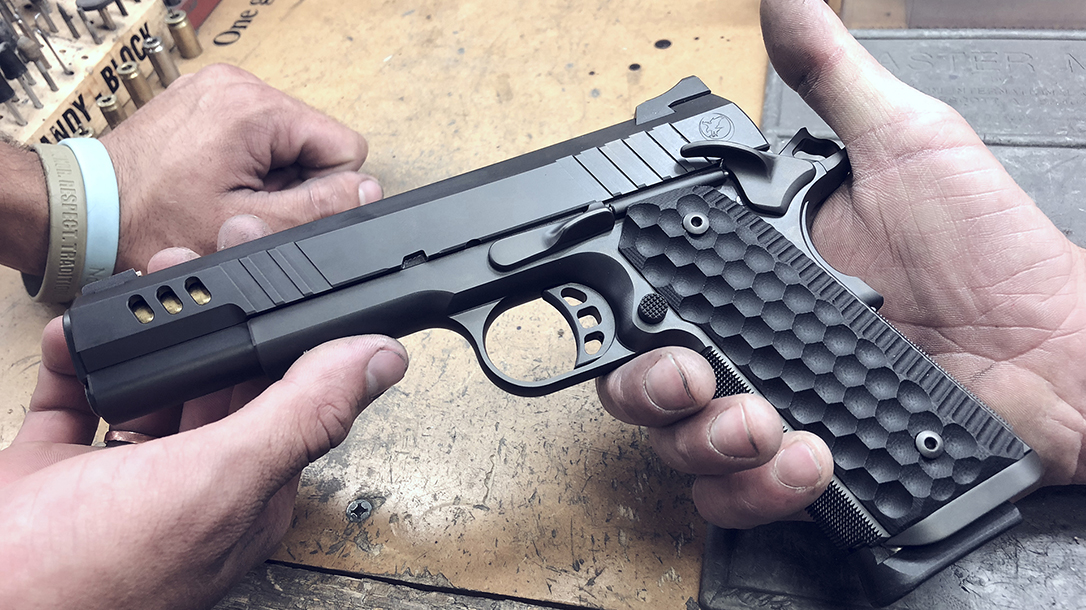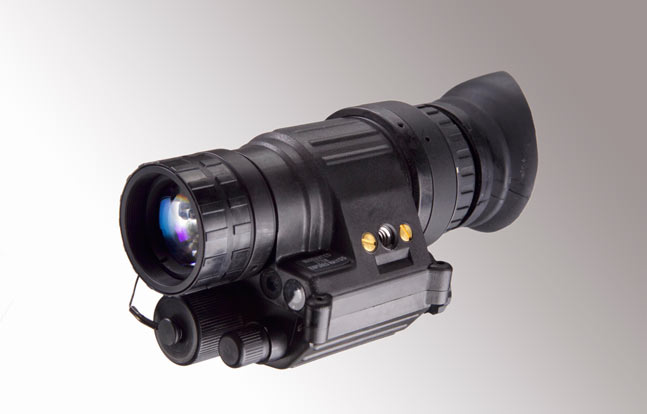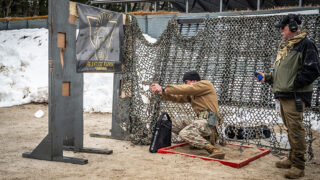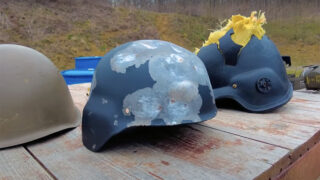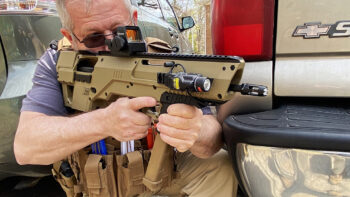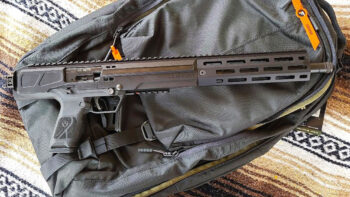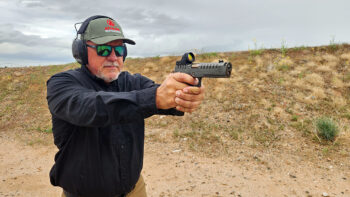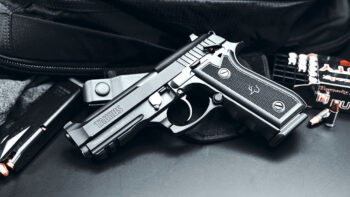During the Battle of Mogadishu, better known to the public as the “Black Hawk Down” incident, when the helicopters went down, U.S. Air Force Technical Sergeant Tim Wilkinson was part of the rescue team that was sent in. Wilkinson was part of a 15-man combat search and rescue team whose mission was to get the flight crews from the downed UH-60 Black Hawk out of the area.
Once on the ground, Wilkinson and a fellow USAF pararescueman (also known as a “pararescue jumper,” or PJ), one of which was wounded, treated and recovered the downed helicopter crew while the battle ensued around them. During this 15-hour firefight, as Rangers kept the militia at bay, Wilkinson raced through the fury to retrieve and evacuate wounded and dead American soldiers. Even when shrapnel tore a chunk of skin off his face, Wilkinson continued with his mission—a very special mission given to only a few elite Air Force warriors.
Wilkinson was quoted as saying, “I learned then that life is a matter of millimeters and nanoseconds. If my head was turned a different way, I might be dead. Fortunately, all the bullets missed me, and my scars healed up nice.”
As gunfire turned the city’s streets into a shooting gallery, Wilkinson continued to risk his life to retrieve fallen soldiers. When supplies and ammunition dwindled, he went to the drop zones to retrieve airdropped supplies.
For his bravery and valor, Technical Sergeant Wilkinson received the Air Force Cross, our nation’s second-highest award for gallantry under fire. He became the first enlisted person to earn the Air Force Cross since 1975—and once again reinforced the legacy of the PJs.
Meet The PJs
The pararescue creed: “It is my duty as a pararescueman to save lives and to aid the injured. I will be prepared at all times to perform my assigned duties quickly and efficiently, placing these duties before personal desires and comforts. These things I do, that others may live.”
The term “Para Jumper” is a retronym of the initials “PJ,” which was used on an Air Force Form 5 (aircrew flight log) to identify anyone who was on board that was going to jump from the aircraft. Pararescuemen originally had no “in flight” duties and were listed only as “PJ” on the Form 5—and that term “PJ” is what pararescuemen are mostly known by today.
Air Force PJs are elite members of our nation’s special operations community, and the only special operations group intertwined in every facet of USSOCOM’s mission sets. If a mission is launched anywhere in the world, the PJs are part of it. According to the Air Force, “a PJ’s primary function is as a personnel recovery specialist, with emergency medical capabilities in humanitarian and combat environments. PJs deploy in any available manner, to include air-land-sea tactics, into restricted environments to authenticate, extract, treat, stabilize and evacuate injured personnel.”
Pararescuemen endure some of the toughest training offered in the U.S. military. Those members serve in the regular and reserve Air Force and the Air National Guard. Completing that training, coupled with their unique mission, earns them the right to wear the maroon beret.
PJ Training Pipeline
To become a member of this elite group, which until recently was an exclusively enlisted field (officers are now permitted to try out), pararescuemen must become highly trained emergency trauma specialists. They must maintain an Emergency Medical Technician-Paramedic qualification throughout their careers. With this medical and rescue expertise, along with their deployment capabilities, PJs are able to perform life-saving missions in the world’s most remote areas—and rescue troops trapped in some of the toughest, hottest spots in the world.
PJ training puts the individual through some of the toughest and most comprehensive military training our nation offers. It starts with the nine-week Indoctrination Course at Lackland Air Force Base (AFB), Texas. This course recruits, selects and trains future PJs through extensive physical conditioning. Training accomplished at this course includes physiological training, obstacle courses, marches, dive physics, dive tables, metric manipulations, medical terminology, cardiopulmonary resuscitation, weapons qualifications, PJ history and leadership reaction courses.
Next, the Air Force sends prospective PJs to the three-week U.S. Army Airborne School at Fort Benning, Georgia. Once there, the trainees learn the basic parachuting skills required to infiltrate an objective area by static-line airdrop. A PJ trainee then transitions to the six-week U.S. Air Force Combat Diver School in Panama City, Florida, where trainees learn to become combat divers with scuba and closed-circuit diving equipment to covertly infiltrate denied areas and conduct subsurface searches and basic recovery operations. While there, the PJ trainee also goes through the U.S. Navy Underwater Egress Training, which teaches trainees how to escape from an aircraft that has been ditched in the water.
Then it’s off to the U.S. Air Force Basic Survival School at Fairchild AFB in Washington for two and a half weeks of basic survival techniques in remote areas. The instruction also includes principles, procedures, equipment and techniques that enable individuals to survive, regardless of climatic conditions or unfriendly environments, and return home.
After this ground-based training, its back into the air for the U.S. Army Military Free Fall Parachutist School at either Fort Bragg or Yuma Proving Grounds, Arizona, for five weeks of wind-tunnel training and in-air instruction focusing on student stability, aerial maneuvers, air sense and parachute opening procedures for a combat free-fall parachute drop.
Next, the trainees have 22 weeks of Paramedic School at Kirtland AFB, New Mexico, learning how to manage trauma patients by providing emergency medical treatment prior to evacuation. Upon graduation, an EMT-Paramedic certification is awarded through the National Registry. Finally, a trainee goes through 24 weeks of the Pararescue Recovery Specialist Course at Kirtland AFB to try to qualify as a pararescue recovery specialist for assignment to any pararescue unit worldwide. This training includes field medical care and extrication basics, field tactics, mountaineering, combat tactics, advanced parachuting and helicopter insertion/extraction.
After completing some of the most wide-ranging and daunting training the U.S. military offers, only then are these warriors allowed to become operational and fulfill the role of a PJ.
Special Tactics
After completion of the above “basic training,” a new Air Force PJ graduate is assigned to the Special Tactics Training Squadron (STTS). Once there, a new PJ must then attend what they call Phase III Employment Readiness Training and part of Phase IV Operational Readiness Training. After completing those courses, a PJ can be stationed anywhere in the world. No matter where they’re stationed, their unique mission can put them right in the middle of a “hot zone” at a moment’s notice.
The PJs are part of the Air Force Combat Search and Rescue (CSAR) team. The CSAR team goes into hostile territory to rescue and medically treat downed pilots, crew and others. According to a CNN article, “The PJs are part of what’s called the Guardian Angel Weapon System, which includes combat rescue officers and survival, evasion, resistance and escape specialists. Pilots and aircrews of high-tech rescue helicopters, A-10 Warthog attack jets, fighter jets, reconnaissance aircraft and special refuelers round out the team.”
In that same article, a PJ was quoted as saying, “You’re looking at a whole wing of people to put a couple of us guys on the ground to get one guy home.”
The PJs are the only unit designated by the Department of Defense primarily to rescue and recover U.S. personnel trapped behind enemy lines. These units take on other special duties that they do not talk about, but their main mission is to save and bring people home from hostile territory. The Air Force credits their CSAR teams with more than 750 saves in Iraq and Afghanistan since 9/11.
One PJ was quoted in the CNN article as saying, “The work has always been dangerous, but it is getting more so. Insurgents have laid ambushes, or placed bombs or other ‘secondary devices,’ that specifically target the rescue teams. They call these ‘SAR traps,’ short for search and rescue traps. Six PJs have been killed since the beginning of both operations Iraqi Freedom and Enduring Freedom.”
The book That Others May Live documents the heroism of Air Force National Guard PJs attempting to rescue fisherman and others caught up in “The Perfect Storm,” which was later turned into a movie. The Air Force also credits these units with saving more than 4,000 lives during and after Hurricane Katrina.
Green Footprints
If you are lucky enough to be rescued by a PJ, you can take part in a unique tradition that arose during the Vietnam War. During Vietnam, at one point the most commonly used helicopter was the CH-3E, nicknamed the “Jolly Green Giant” due its olive drab exterior. When pilots or other military personnel were in need of rescue, the PJs would arrive aboard one of these Jolly Green Giants. After rescuing the personnel, those rescued would proceed to receive the tattoo of the green feet on their rear end, because the PJs saved their bacon. Sources say that tradition is still very much alive today!








